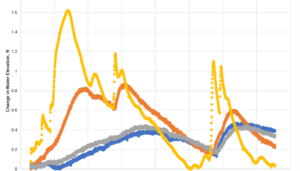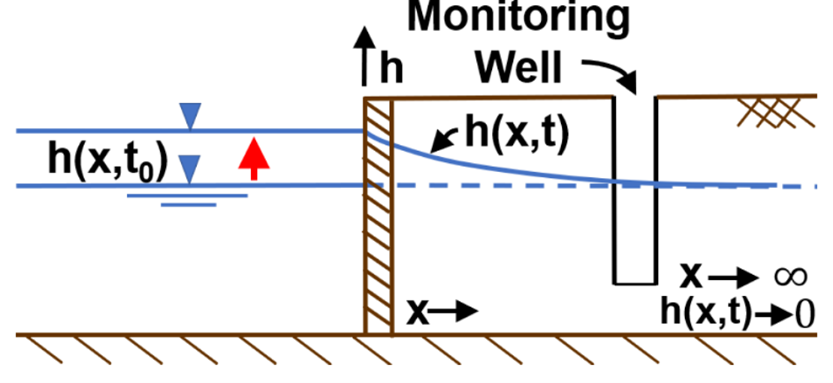Challenge
The client proposed to build a large facility with the structure below ground surface at a Site directly east of the White River in Indianapolis, IN. Given the proximity to the river, flood events of the river would likely result in a significant rise in groundwater elevation. Mundell was asked to identify the maximum groundwater elevations at the Site during the 50-Year (2-percent-annual-chance) and 100-Year (1-percent-annual-chance) flood events of the White River. To complicate the groundwater assessment, a rock dam (about 10-feet in height) was located along the White River just north of the Site. Furthermore, the results of the assessment were to be used for foundation and/or dewatering design.
Action
Recognizing the end-use of the groundwater assessment, Mundell used a three-phase modeling approach. Three classes of groundwater flow models were used, including a numerical model (finite difference (MODFLOW), an analytic element model (GFLOW), and a transient stream-aquifer analytical model. The transient stream-aquifer analytical model was developed by Mundell and based on a convolution analytical approach utilizing Python 3 programming language. To implement the transient model, Mundell analyzed the historical White River stage data to predict the expected length of a White River flood event (i.e., determine the time it takes for the river to rise and fall during a flood event). The models were developed to capture the complex stream-aquifer dynamics and to account for the presence of a low-head dam situated upstream of the site. To calibrate and validate the models (i.e., make sure they accurately modeled the conditions at the Site), Mundell used groundwater level transducer data collected in on-Site piezometers and referenced nearby White River stage data.
Results
The models were successfully calibrated and validated using the Site‑specific data. Considering the various modeling results, Mundell delivered the final report which outlined the expected range of groundwater elevations at the Site due to a severe White River flood event. In addition, Mundell provided design recommendations and a detailed description of the modeling process to help the Client understand the results..




